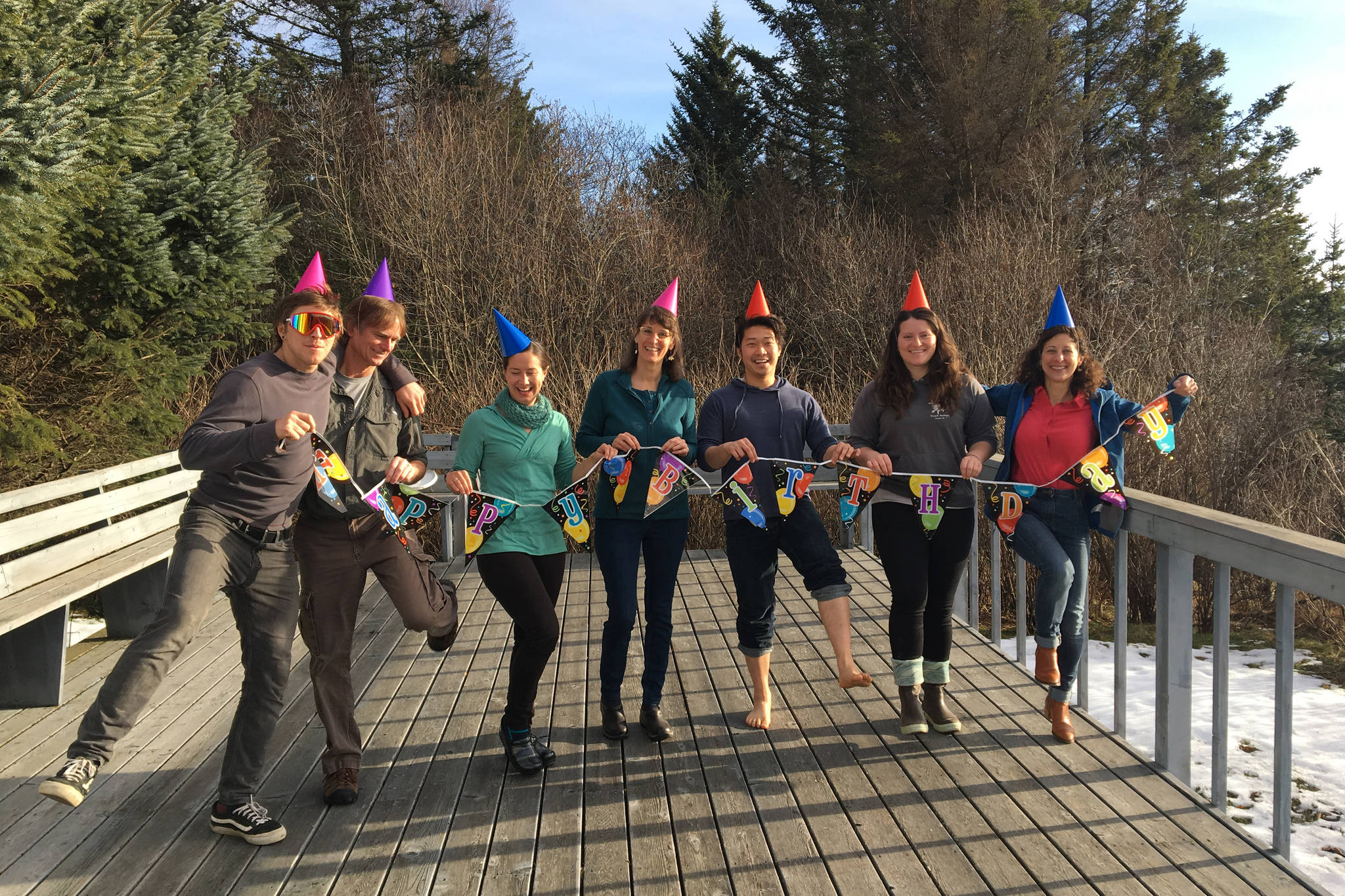In February the Kachemak Bay National Estuarine Research Reserve (KBNERR) celebrated 20 years of place-based research and education, including long-term monitoring of coastal and estuarine habitats, juvenile salmon productivity, decision-maker workshops, K-12 education programs, and graduate research fellowships.
Kachemak Bay, as one of the most productive and diverse marine environments in Alaska, plays an integral role in the lives of many Kenai Peninsula residents. Accordingly, in 1999 the National Oceanic and Atmospheric Administration (NOAA) and the State of Alaska established the KBNERR to serve as a model for environmental stewardship where human and natural communities continue to thrive for generations to come.
The concept of establishing a coastal reserve in Homer was first proposed by a group of local visionaries, many of whom have served, or continue to serve, on the KBNERR Community Council. The Community Council offers an organized structure for the facilitation of dialog between resource agencies, local governments, researchers, environmental educators, conservation groups, and others interested in natural science research and education.
Current work at KBNERR includes the collection and analysis of real-time weather and water chemistry, the detection of marine invasive species and potentially harmful algal blooms, ecological studies of juvenile salmon productivity in estuarine habitats, and coastal erosion mapping.
Twenty years of data collection, in combination with ongoing studies, provide opportunities for scientists and graduate students to conduct vital research in Kachemak Bay’s “living laboratory.” Research and monitoring findings are communicated through KBNERR’s training and education programs to convey a fundamental understanding of coastal processes, raise awareness about the potential impacts of environmental stressors, and work with resource managers to seek solutions to current or potential problems.
As one of 29 coastal reserves nation-wide, KBNERR is funded through a Federal and State partnership between the National Oceanic & Atmospheric Administration (NOAA) and the University of Alaska Anchorage’s Alaska Center for Conservation Science. Staff successfully procure a variety of state and federal grants, contributing approximately 1.3 million dollars annually to the local economy. Initially administered by the Alaska Department of Fish and Game’s Habitat Division, then under Department of Sport Fish, the Reserve has been administered by the University of Alaska since July 2015.
KBNERR continues to thrive because of the support and engagement of the greater Homer community and numerous area partners. Reserve staff need and want your input. Contact KBNERR on their website at https://accs.uaa.alaska.edu/kbnerr/, via email at uaa_kbnerr@alaska.edu or call the main line at 907-235-4799.
Jessica Shepherd is the education coordinator of the Kachemak Bay National Estuarine Research Reserve (KBNERR).


